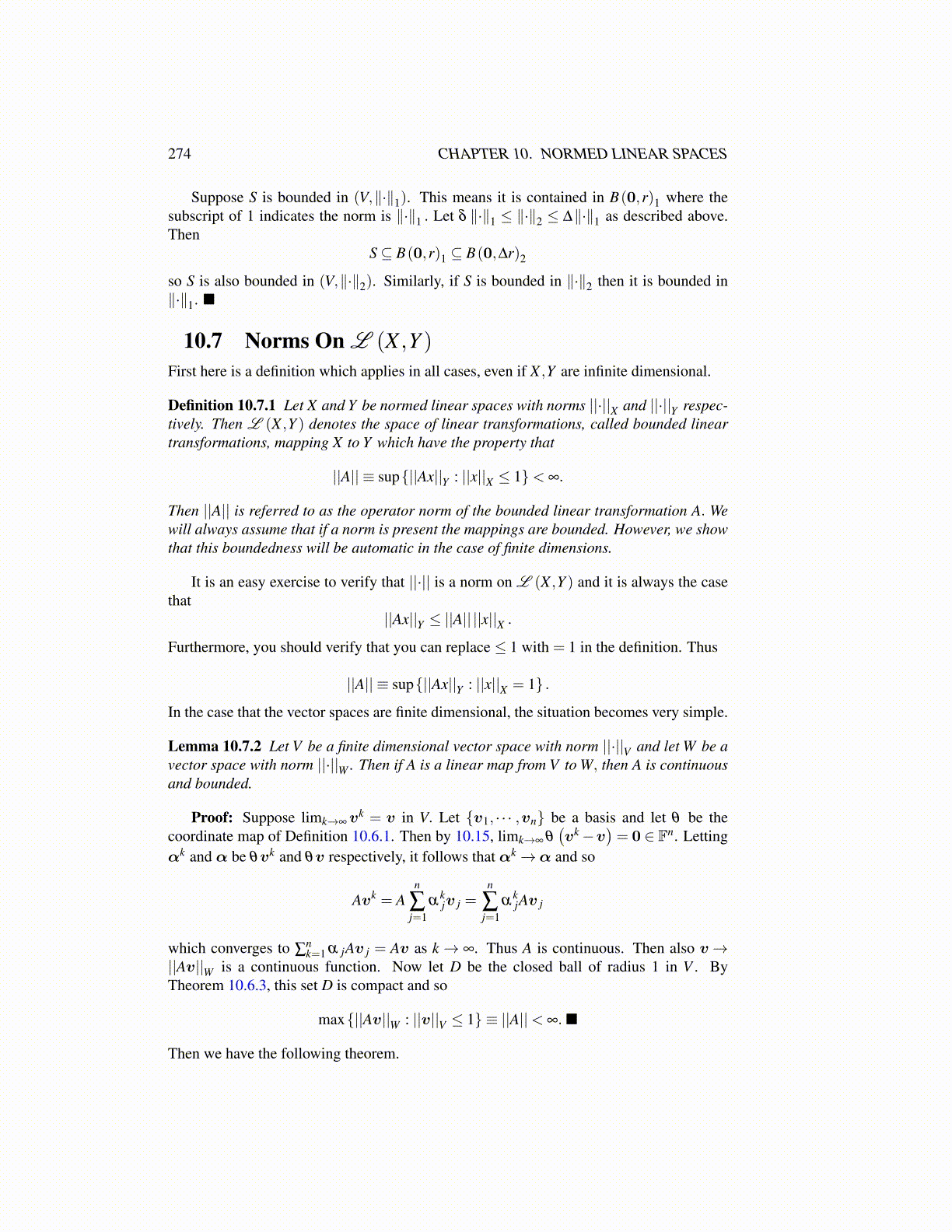
274 CHAPTER 10. NORMED LINEAR SPACES
Suppose S is bounded in (V,∥·∥1). This means it is contained in B(0,r)1 where thesubscript of 1 indicates the norm is ∥·∥1 . Let δ ∥·∥1 ≤ ∥·∥2 ≤ ∆∥·∥1 as described above.Then
S⊆ B(0,r)1 ⊆ B(0,∆r)2
so S is also bounded in (V,∥·∥2). Similarly, if S is bounded in ∥·∥2 then it is bounded in∥·∥1. ■
10.7 Norms On L (X ,Y )First here is a definition which applies in all cases, even if X ,Y are infinite dimensional.
Definition 10.7.1 Let X and Y be normed linear spaces with norms ||·||X and ||·||Y respec-tively. Then L (X ,Y ) denotes the space of linear transformations, called bounded lineartransformations, mapping X to Y which have the property that
||A|| ≡ sup{||Ax||Y : ||x||X ≤ 1}< ∞.
Then ||A|| is referred to as the operator norm of the bounded linear transformation A. Wewill always assume that if a norm is present the mappings are bounded. However, we showthat this boundedness will be automatic in the case of finite dimensions.
It is an easy exercise to verify that ||·|| is a norm on L (X ,Y ) and it is always the casethat
||Ax||Y ≤ ||A|| ||x||X .
Furthermore, you should verify that you can replace ≤ 1 with = 1 in the definition. Thus
||A|| ≡ sup{||Ax||Y : ||x||X = 1} .
In the case that the vector spaces are finite dimensional, the situation becomes very simple.
Lemma 10.7.2 Let V be a finite dimensional vector space with norm ||·||V and let W be avector space with norm ||·||W . Then if A is a linear map from V to W, then A is continuousand bounded.
Proof: Suppose limk→∞vk = v in V. Let {v1, · · · ,vn} be a basis and let θ be thecoordinate map of Definition 10.6.1. Then by 10.15, limk→∞ θ
(vk−v
)= 0 ∈ Fn. Letting
αk and α be θvk and θv respectively, it follows that αk→α and so
Avk = An
∑j=1
αkjv j =
n
∑j=1
αkjAv j
which converges to ∑nk=1 α jAv j = Av as k→ ∞. Thus A is continuous. Then also v→
||Av||W is a continuous function. Now let D be the closed ball of radius 1 in V . ByTheorem 10.6.3, this set D is compact and so
max{||Av||W : ||v||V ≤ 1} ≡ ||A||< ∞.■
Then we have the following theorem.